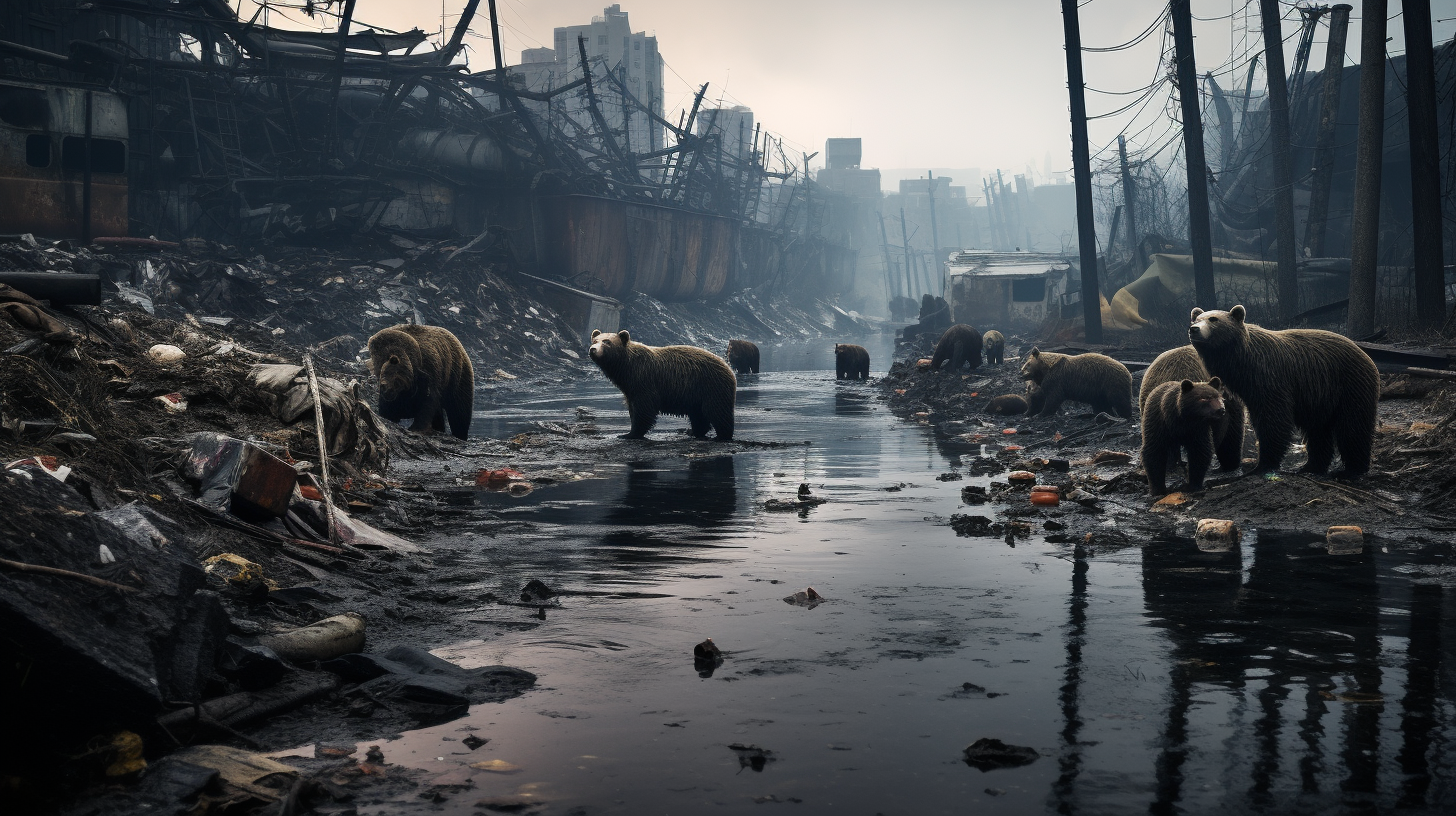In the relentless march towards dominion over every last inch of the Earth’s surface, we have witnessed a shocking retreat of the animal kingdom. Trees, which once stood tall, serving as the grand pillars of biodiverse ecosystems, are now reduced to lines of code in virtual reality simulations. Rivers and streams, where life once bubbled in abundance, now lie trapped beneath layers of concrete and steel.
Our once grand symphony of wildlife has been replaced by the cacophony of urban expansion, the hum of air purifiers, and the droning sound of traffic. Species that used to thrive are either pushed to the brink of annihilation or have learned to scavenge on the fringes of human excess.
Take, for example, the urban fox, a symbol of wild resilience amidst our concrete wasteland. Its eyes, reflecting the neon lights, are a testament to nature’s adaptability; but also a silent accusation, a reminder of the teeming forests that once were. Or the peregrine falcons, now nesting on our skyscrapers, as mountains are reshaped into shopping centers and luxury apartments.
However, as we witness this urban sprawl, one cannot help but ponder—what is disappearing is not merely green space but the essence of our planet’s heritage. Stories of wild creatures and untouched landscapes become myths, passed down as fables to children who may never see such wonders outside of the archives of history.
The irony lies in the aesthetic: amidst the dystopian backdrop, architects erect buildings with vertical gardens, a naive mimicry of the jungles we’ve leveled. The urban dweller delights in their balcony bee garden, not realizing the last wild bee was seen years ago, in a land now buried by the appetite for human expansion.
And so, the rhythm of ‘progress’ beats on, to the pulse of bulldozers. The cries of creatures great and small, drown in the sea of development. This is our new reality; a fabricated normality where the thought of roaming buffalo or soaring condors is as distant as the possibility of reversing the unyielding tide of our urban empire.
We stand on the precipice, looking out over our steel jungles and wonder—could this have been different? Could there have been a reprieve, a moment of pause, where the clamor for growth did not drown out the whispers of nature?
Ultimately, we are left with the hollow echo of a world that once pulsed with the vibrant, untamed wild. This is our testament, not of triumph, but of loss—a monument to the silent retreat of the diverse tapestry of life that no longer finds refuge amongst us.
As dusk falls on the artificial glow of our cites, we reflect on this somber evolution, and the legacy we have chosen. The question now stands moot: for whom have we built these sprawling labyrinths if not for ourselves, as we surely did not construct them with our fellow Earth inhabitants in mind.
We close with a final, lingering note: Is there a place in tomorrow’s world for the coyotes’ call, or have we indeed silenced the last utterances of the wild, leaving only the echoes of what once was, in the grim architecture of our Green Dystopia?
